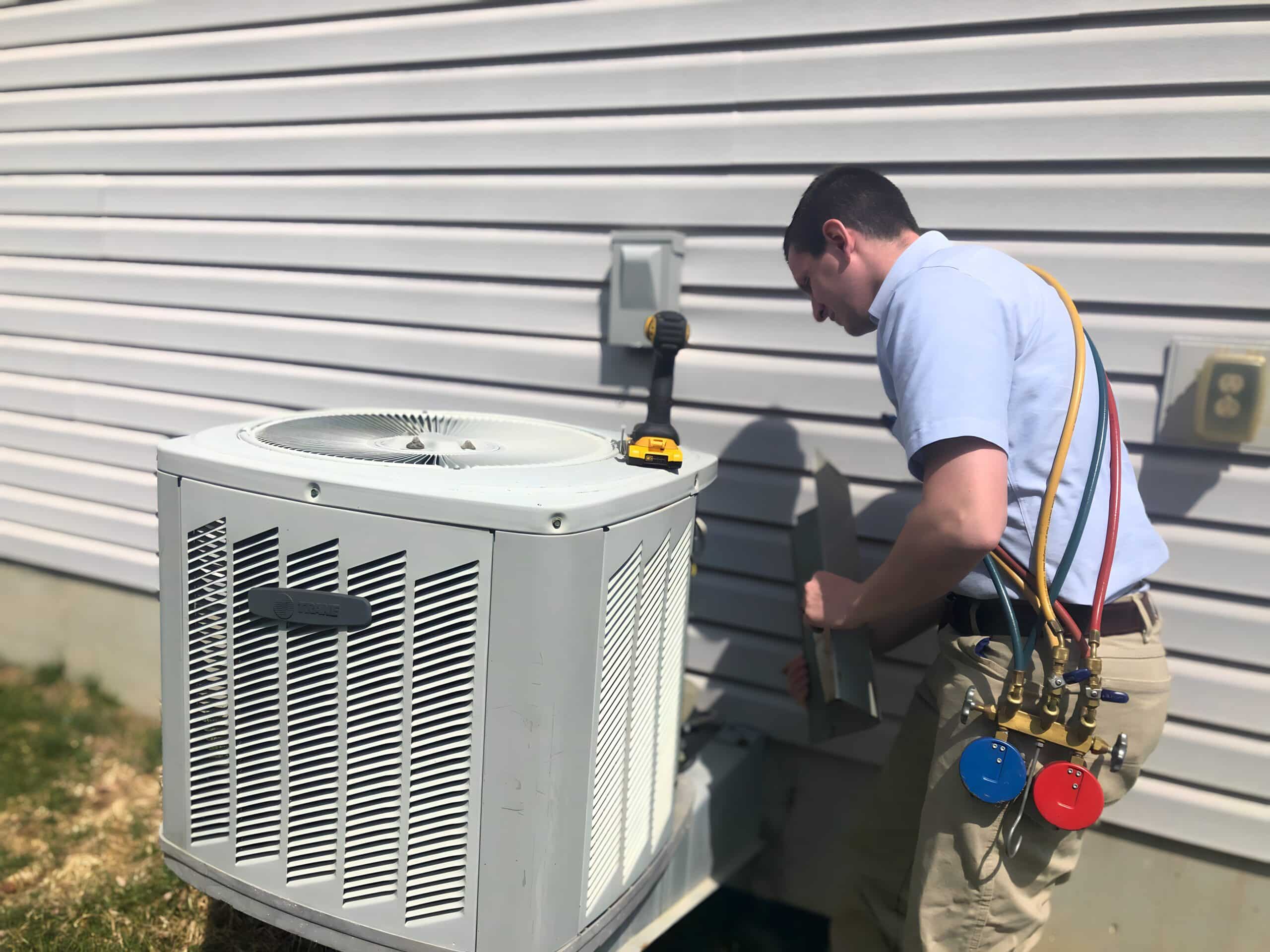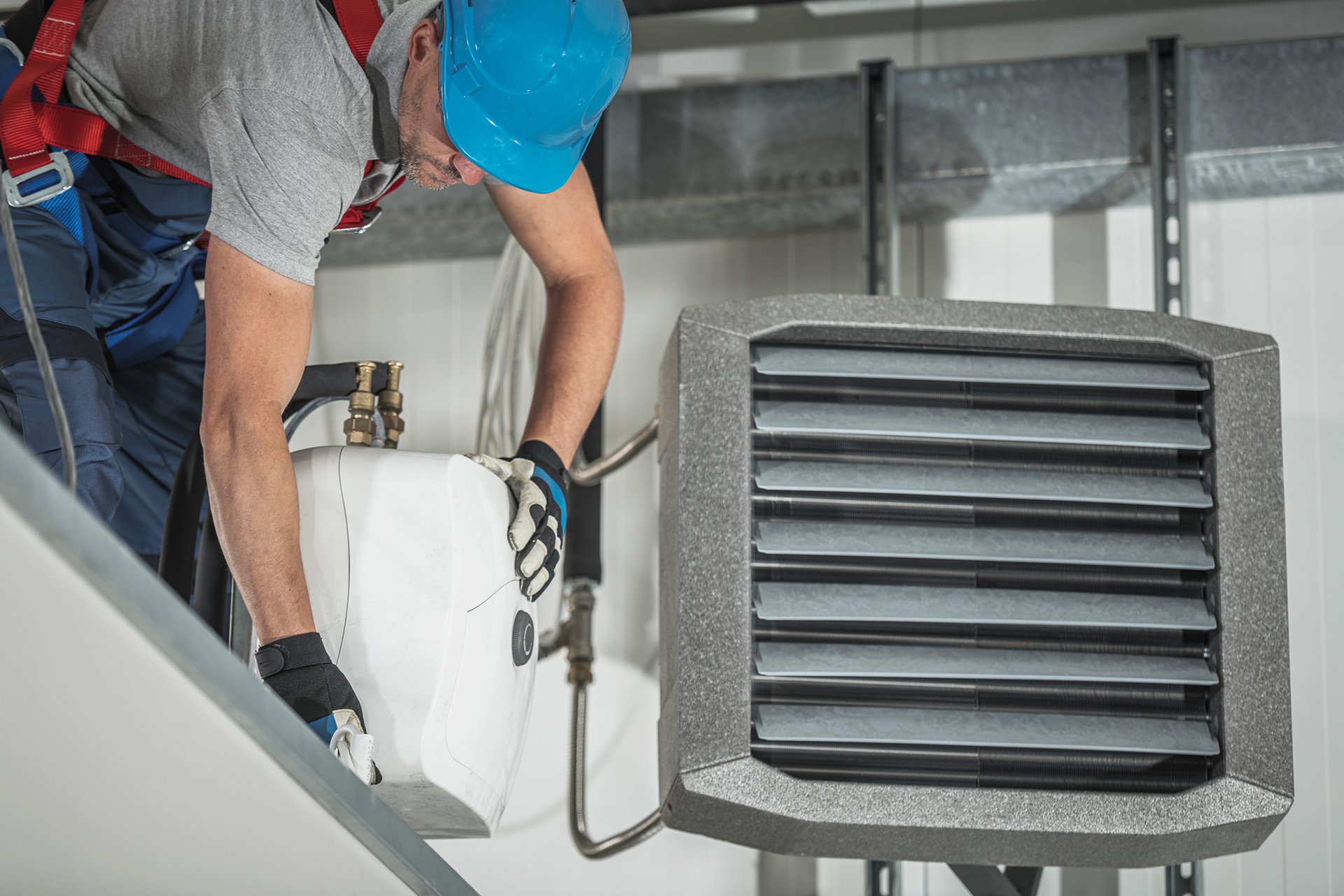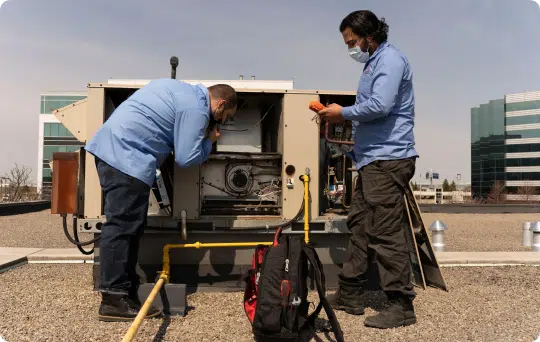Cost Breakdown of Repair vs Full furnace replacement
Cost Breakdown of Repair vs Full furnace replacement
Blog Article
Just How a Heatpump and Heating System Collaborate to Maximize Your Home's Heating Efficiency
Understanding just how a warm pump and furnace interact is crucial for house owners seeking efficient home heating services. Each system has its strengths, giving a well balanced method to home convenience. The warm pump stands out in moderate temperature levels, while the heater provides quick warmth throughout extreme cold. This harmony not only reduces power costs yet likewise enhances the life expectancy of both appliances. What variables affect this collaboration, and exactly how can house owners maximize their advantages?
Comprehending Heat Pumps: How They Function
Many individuals might be unfamiliar with their internal operations, warmth pumps play an essential duty in contemporary home heating systems. These devices operate by moving warm from one area to another, making use of the principles of thermodynamics. In colder months, a heat pump removes warm from the outside air, ground, or water, and transfers it inside to warm the home. Alternatively, during warmer months, it can turn around the process, working as an air conditioning unit by eliminating heat from inside to the outside.Heat pumps contain an evaporator, compressor, growth, and condenser valve. The cooling agent within the system soaks up heat as it vaporizes at reduced temperature levels and pressures. The compressor after that enhances the stress and temperature of the cooling agent, enabling it to release heat as it condenses. This effective procedure can considerably reduce power usage contrasted to traditional heating methods, making warm pumps a sustainable option for environment control in homes.
The Duty of Furnaces in Home Home Heating
Furnaces play a vital function in home heating by supplying a trusted resource of heat throughout the chillier months. They run by generating heat via burning or electrical resistance, distributing it throughout the home using air ducts or radiant systems. The efficiency of a heating system is frequently determined by its Annual Fuel Usage Effectiveness (AFUE) score, which shows just how successfully the device converts gas into heat.Furnaces can make use of various power resources, consisting of gas, electrical energy, gas, or oil, allowing house owners to pick one of the most appropriate option for their demands. Unlike heatpump, which may battle in severe chilly, furnaces keep consistent efficiency, making certain that interior temperatures remain comfortable despite outdoor problems. In addition, contemporary heating systems frequently come furnished with advanced technology, such as wise thermostats and variable-speed blowers, improving their performance and responsiveness. This versatility makes furnaces an important part in comprehensive home heating approaches.

Benefits of Utilizing Both Equipments Together
Combining the toughness of both heating systems and warmth pumps can cause an extra efficient and efficient home heating service. Using both systems allows homeowners to capitalize on the heatpump's power effectiveness throughout milder temperature levels while relying on the heater for even more extreme cold problems. This twin technique can considerably reduce power prices, as heatpump eat much less electrical energy than typical home heating techniques when temperature levels are moderate.Additionally, using both systems with each other can enhance comfort degrees in the home. Warm pumps can provide consistent, also heating, while furnaces can rapidly elevate ambient temperature levels when needed. The integration of both systems can expand the lifespan of devices by reducing wear and tear on each system, as they share the work. Eventually, property owners can appreciate a balanced, economical heating option that readjusts perfectly to differing weather problems, making sure a cozy and inviting home throughout the cold weather.
Just How Warm Pumps and Furnaces Complement Each Other
They develop a complementary home heating system that takes full advantage of performance and convenience when property owners integrate warm pumps and heaters. Warmth pumps run by transferring heat from the outside air or ground, making them extremely effective in moderate climates. They stand out during milder temperatures, offering economical home heating. Alternatively, heaters create warmth via burning or electric resistance, delivering solid, instant heat throughout extreme chilly conditions.The combination of these two systems enables dynamic adjustments based upon temperature variations. During warmer months or milder winter months days, the heatpump can take the lead, preserving energy and decreasing prices. As temperatures drop, the heating system can perfectly engage, ensuring consistent heat throughout the home. This synergy not only maximizes energy usage but likewise enhances the lifespan of both systems, as each unit runs within its excellent performance array. Together, they develop a well balanced environment that adjusts to differing environment demands.
Enhancing Efficiency: Tips for Homeowners
Property owners can improve their heating performance with several functional strategies. Developing a routine maintenance timetable, incorporating wise thermostat technology, and carrying out efficient insulation and sealing services are key steps. These measures not only boost comfort yet likewise decrease energy costs.
Regular Maintenance Set Up
To assure maximum heating efficiency, establishing a routine upkeep routine is necessary for any home. Property owners ought to focus on routine examinations of both heat pumps and furnaces to ascertain peak efficiency. This consists of transforming air filters each to 3 months, as clogged up filters can significantly lower efficiency. Furthermore, organizing professional upkeep at the very least as soon as a year allows service technicians to determine and address possible issues prior to they intensify. Home owners ought to additionally cleanse the warm pump's outside unit to avoid debris build-up that can prevent air movement. By sticking to a normal maintenance schedule, property owners not just boost their furnace' performance but also prolong their life-span, bring about better convenience and reduced energy expenses throughout the colder months.
Smart Thermostat Combination
Integrating a wise thermostat right into a home heating unit can significantly improve energy efficiency, particularly as it enables precise control over temperature settings. These tools can find out the home owner's routine and preferences, immediately adjusting the temperature level to optimize comfort while reducing power use. They can lower home heating during times when the home is unoccupied, minimizing unnecessary usage. Several wise thermostats additionally give real-time energy usage data, making it possible for property owners to make enlightened choices regarding their home heating habits. Additionally, remote access through smartphone applications allows users to readjust settings from anywhere, making sure the home is cozy upon return. On the whole, wise thermostat integration not only enhances convenience but significantly adds to energy savings and performance.
Insulation and Sealing Solutions
Smart thermostats play a vital duty in power efficiency, but their efficiency can be greatly improved by proper insulation and securing options. Home owners should prioritize insulating floors, walls, and attic rooms to lessen heat loss. Top quality insulation materials, such as spray foam or fiberglass, can significantly enhance thermal resistance. In addition, securing spaces around home windows, doors, and ducts prevents chilly air infiltration and warmth escape. Weatherstripping and caulking are effective approaches for attending to these leakages - heat pump service. Regular inspections for air leaks, together with making use of blower door tests, can help determine trouble locations. By buying insulation and securing, homeowners can optimize the efficiency of their heating systems, ultimately leading to reduced energy usage and reduced utility bills
Common Misconceptions About Heat Pumps and Furnaces
What mistaken beliefs surround heat pumps and furnaces? Several people erroneously think that warm moved here pumps are ineffective in colder environments. In truth, modern heatpump are made to run successfully even in low temperature levels, giving dependable heating throughout winter. Another usual misconception is that heating systems are constantly extra effective than heatpump. Nonetheless, this depends upon the particular energy resources and performance ratings of the units in concern. Some might likewise believe that Visit Your URL making use of both systems all at once is unnecessary, yet in truth, this mix can enhance home heating efficiency, specifically during severe weather problems. Additionally, individuals usually presume that heat pumps call for continuous maintenance, when in fact, they have similar upkeep needs to typical home heating systems. By unmasking these myths, homeowners can make even more enlightened decisions regarding their home heating choices, ultimately resulting in boosted comfort and energy performance in their homes.
Maintenance Considerations for Combined Solutions

Frequently Asked Inquiries
Can Heat Pumps Work Properly in Exceptionally Cold Climates?
Heatpump can have a hard time in very cool environments as a result of lowered performance and warm extraction constraints. Nonetheless, innovations in modern technology have actually caused models made for better performance in such problems, enhancing their viability in severe settings.
For How Long Do Heat Pumps and Furnaces Normally Last?
Heatpump commonly last 15 to two decades, while heaters have a lifespan of 15 to thirty years. Regular maintenance can expand their long life, guaranteeing reliable operation and lowering the need for early replacements.

What Is the Typical Expense of Installing Both Equipments?
The average cost of mounting both a heatpump and a heating system normally varies between $5,000 to $10,000 - heat pump service. Factors influencing this cost consist of system size, installation intricacy, and local labor prices
Exist Tax Motivations for Making Use Of Energy-Efficient Heating Solutions?
Several homeowners ask regarding tax obligation motivations for energy-efficient furnace. Numerous government and state programs commonly supply credit reports or refunds, encouraging the fostering of sustainable modern technologies to decrease power intake and promote ecological duty.
How Do I Select the Right Dimension Heatpump and Heater?
Choosing the best size warm pump and heating system entails computing the home's square footage, thinking about insulation high quality, and reviewing local climate. Consulting a professional can ensure suitable system efficiency and power efficiency based upon particular requirements. furnace replacement. Understanding exactly how a warm pump and furnace job together is necessary for home owners looking for reliable home heating options. In chillier months, a heat pump extracts heat from the outdoors air, ground, or water, and transfers it inside to heat the living area. When property owners incorporate warm pumps and heating systems, they create a complementary home heating system that makes the most of efficiency and convenience. Warm pumps operate by transferring warmth from the outdoors air or ground, making them highly efficient in modest climates. Heat pumps can struggle in exceptionally cool climates due to reduced efficiency and warmth extraction limitations
Report this page